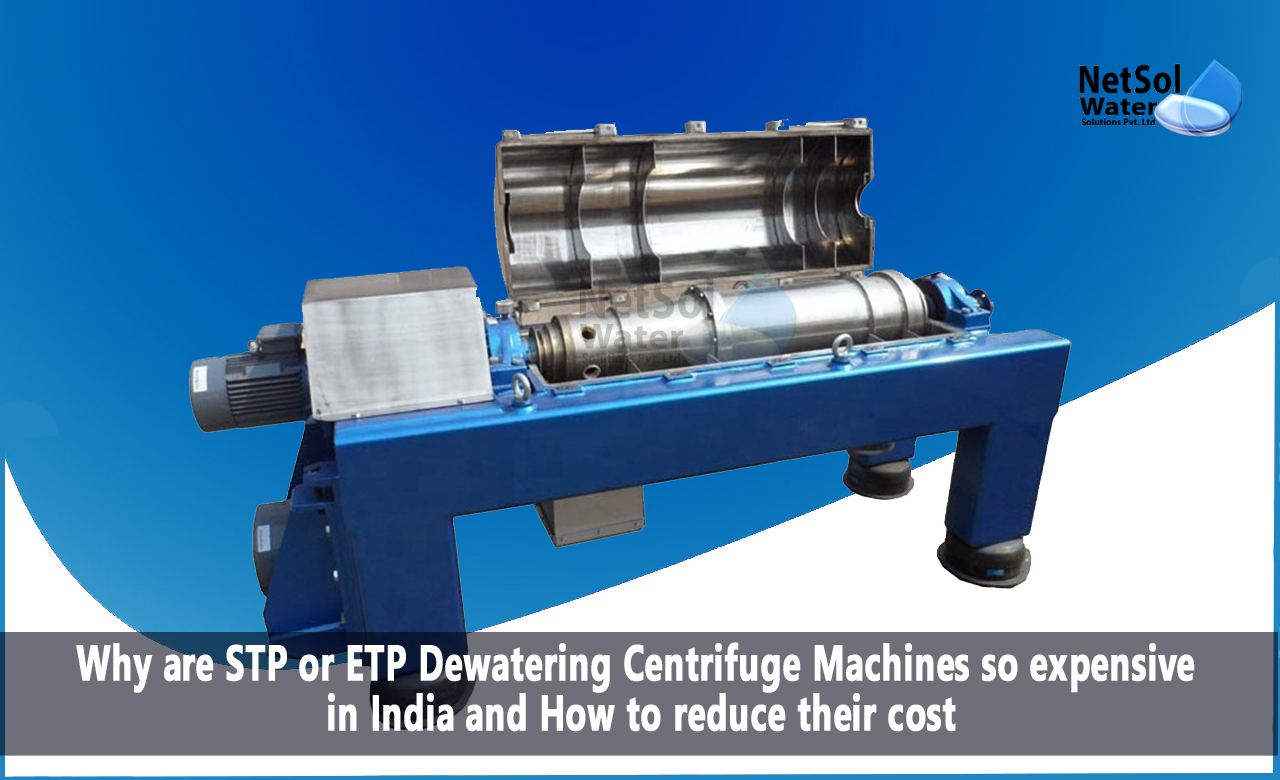Introduction:
Dewatering is the process of the Wastewater Treatment plant and is extremely beneficial for separating sludge into both liquid and solid components for its efficient disposal. It is connected to large wastewater treatment facilities and has a great capacity for processing industrial, commercial, and residential sludge (excess or unused sludge from on-site sanitation at wastewater treatment facilities). This technique significantly lowers the volume of garbage produced, makes it easier to handle them, and lowers the expenses of transportation and disposal.
Dewatering procedures use a lot of mechanical pressure to remove more water than can be removed through thickening. These procedures function by:
1. Using a belt filter press, screw press, or filter press to drive the water (or filtrate) through the sludge
2. centrifuging (rapidly spinning the sludge in a cylindrical tube to drive the water into the stream's centre and the denser particles to the interior walls of the vessel)
3. running the sludge via a rotary press, which is a thin, parallel flow channel with porous sides.
4. enabling the liquid to drain under gravity through a porous material on which the sludge is sitting and evaporate under ambient circumstances (sludge drying lagoons), or both (sludge drying bed).
Why are STP/ETP Dewatering Centrifuge Machines costly in India?
Centrifugation is used to thicken and dewater sewage sludge, and the dewatered sludge has a higher proportion of dry solids (DS). For each, the centrifuge technology is essentially the same. The following are the main operational variations between the two functions:
· The rotation speed employed
· The throughput, and
· The nature of the concentrated solids product generated
STP/ETP dewatering centrifuge machines are expensive in India for a number of reasons.
1. manufacturing of these machines is expensive. Due to their complexity, centrifuge machines must be made with careful engineering, premium materials, and a knowledgeable team.
2. The cost of the raw materials required to make these machines is another factor. Since many of the parts used in centrifuge machines are imported, exchange rate changes can have a big impact on their price.
3. Furthermore, there is a considerable market for these equipments in India. A growing number of businesses are investing in STPs and ETPs as a result of the increased emphasis on environmental sustainability. Due to this, there is now an increase in demand for centrifuge machines, which has raised the price of these devices.
How to lower the cost of centrifuge dewatering machines?
There are numerous techniques to lower the price of centrifuge machines:
1. Promoting domestic manufacturing: India has a sizable manufacturing sector, and promoting domestic production of centrifuges can drastically lower their price. This can be accomplished by offering manufacturers incentives or by encouraging technology transfer from international businesses.
2. Bulk purchasing: STP/ETP operators can bargain better pricing from manufacturers if they band together and buy centrifuge machines in bulk.
3. Standardisation: Centrifuge machine cost can be decreased by standardising the design. This would lower the cost of manufacturing by enabling manufacturers to produce these equipment on a greater scale.
4. Alternate materials: Manufacturers may consider using less expensive materials that yet meet the necessary requirements.
What additional options are there in India besides dewatering the sludge?
1. Belt filter press: Sludge dewatering is accomplished with a belt filter press (BFP) by squeezing the sludge to push the water through a permeable material. Belt filters often have substantially faster startup and shutdown times and produce less noise.
Belt filters are thought to be easy to operate and reliable, with good availability, minimal manpower, simple maintenance, and a long lifespan. The belt filt
2. Vacuum-assisted drying beds: In this process, the water content of the sludge is removed by vacuuming it after being spread out on drying beds. er is best fitted so that it is visible and open at floor level for simpler adjusting and maintenance.
3. Solar drying: Sludge is spread out on drying beds and allowed to dry using the sun in this process.
Do you need an advice or assistance on selecting the best water and waste water treatment unit? We have solutions for all your problems!
Let us now your problem, our experts will make sure that it goes away.
For an assistance or related query,
Call on +91-965-060-8473
Or write us at enquiry@netsolwater.com



